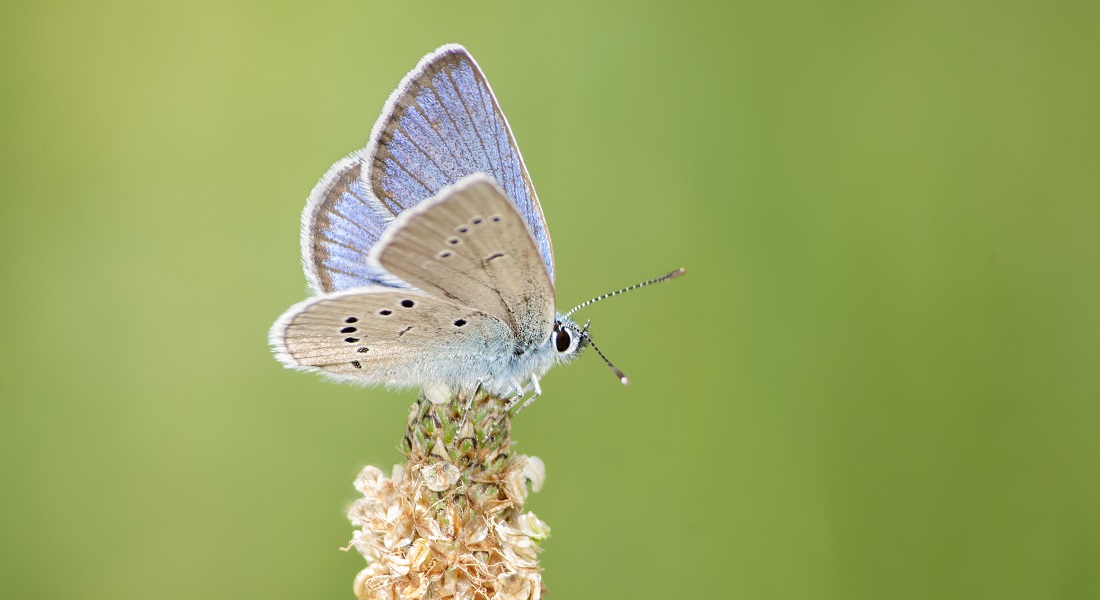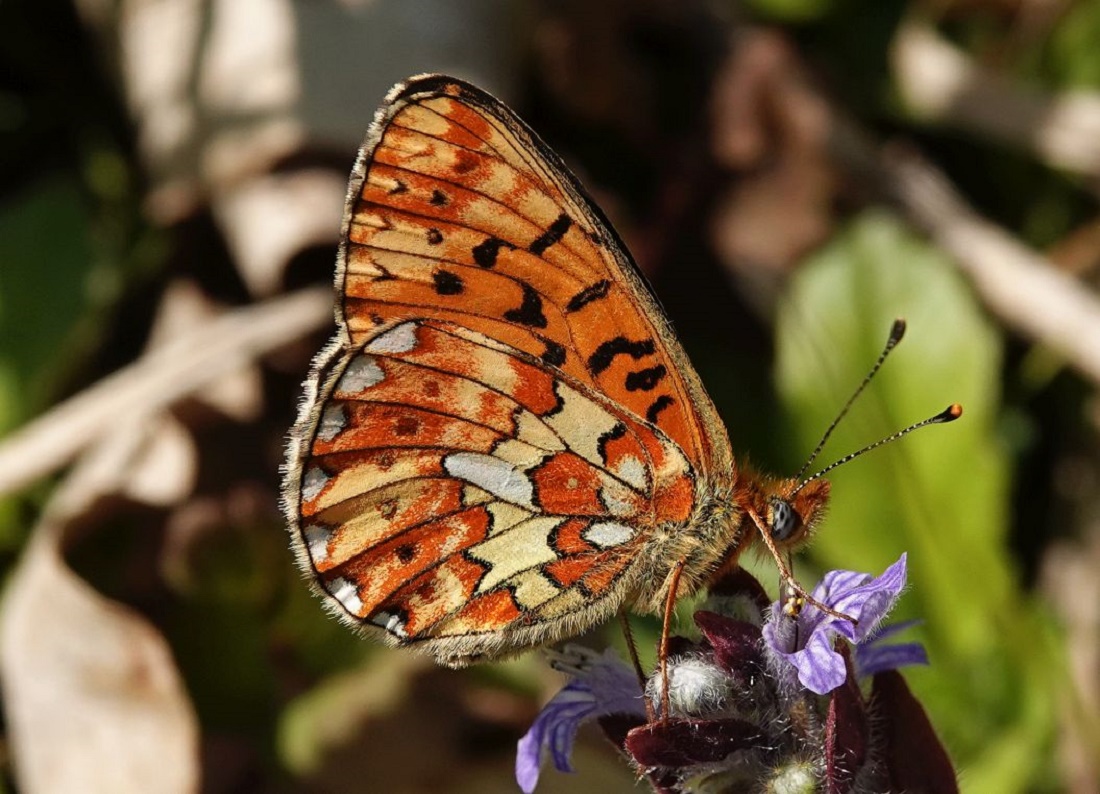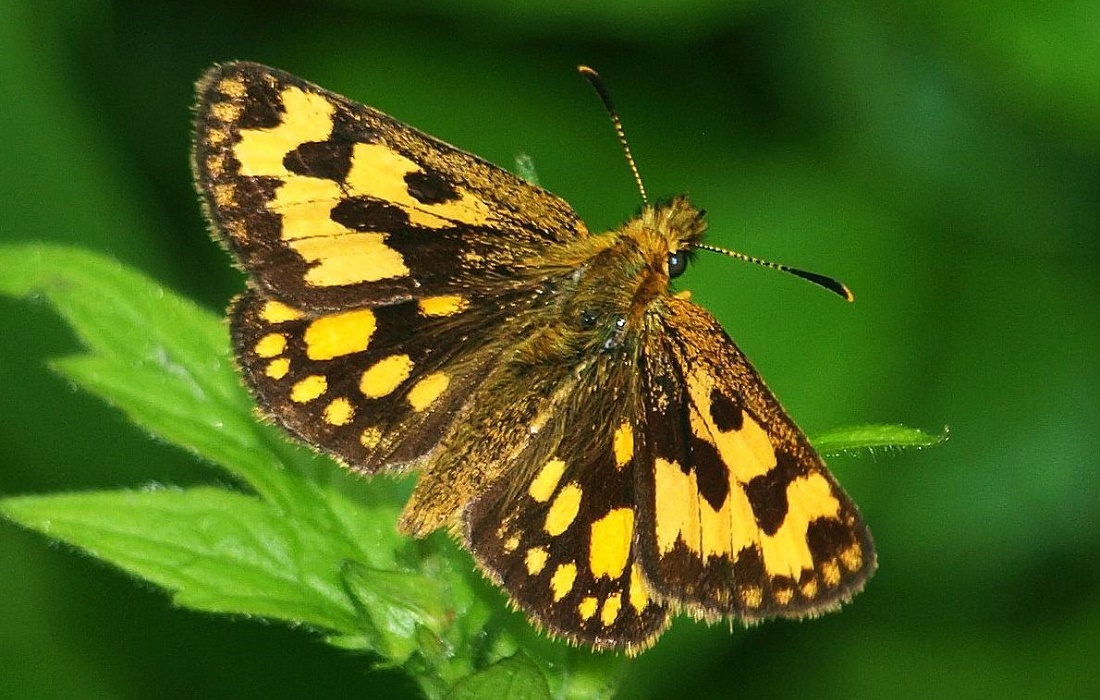Three out of four populations of rare butterflies have been lost
In just 26 years, the distribution of rare butterflies has plummeted by 72% in Eastern Denmark. Several species are threatened with extinction, yet the conservation actions aiming to safeguard species have proved unsuccessful. This is the conclusion of a comprehensive study.

They are as characteristic of Danish summer as cold buttermilk soup, sweet strawberries and dandelions – but we are awful at taking care of them. Many of Denmark’s butterfly species have been in sharp decline for decades, a trend that continues at breakneck speed according to research from the University of Copenhagen. On top of that, current nature conservation efforts do not seem to be helping the rarer species, as was intended.
Data collected over six years by biologist Emil Blicher Bjerregård establishes just how drastic the decline is for twenty-two rare butterfly species across Eastern Denmark. Several of these species are critically endangered.
"The distribution of the twenty-two butterfly species we’ve been monitoring on Zealand, Lolland, Falster and Møn has shrunk by 72% since 1993. All but one of the species have declined, and several of them only have one local population left. I wouldn’t be surprised if at least eight of the species become extinct in a few years. These include the pearl-bordered fritillary, mazarine blue and northern chequered skipper," says Emil Blicher Bjerregård.
Bjerregård, a newly minted biologist from the University of Copenhagen, is lead author of a research article about the study, alongside contributing researchers from the University of Copenhagen’s Department of Biology and Department of Mathematical Sciences.

Pearl-bordered fritillary (Boloria euphrosyne). Foto: Emil Blicher Bjerregård
Lack of original habitat
The researchers compared the number of so-called “occurrence sites” in Eastern Denmark, areas with one or more populations of the target butterfly species were present, with the situation prior to 1993, when the last mapping of butterfly distribution was conducted. In 1993, the twenty-two species were spread across 565 sites in Eastern Denmark, whereas only 158 sites remained in 2019 – a 72% reduction.
"The data are very robust and they unveils dramatic numbers which appear to be worse than in our neighbouring countries. Many once common and widespread species in Denmark have become very rare. And once they’re gone, they won't return," says Associate Professor Hans Henrik Bruun, the study’s senior author.
The study shows that the decline applies to every type of butterfly habitat. These habitats include open woodland, peat bogs and grasslands.
"Butterflies are a good indicator of nature quality. The studied species cannot live in residential neighborhoods, fertilized meadows or the margins of agricultural fields. They need more natural habitats. Plenty of such habitats once existed. This is no longer the case," says Emil Blicher Bjerregård.
Nature conservation efforts have not worked
"Most of the butterfly occurrence sites are formally protected and have been so for decades. But we don’t see any signs that legal area protection – neither national nor EU’s Natura2000 – has had any positive impact for the rarer butterfly species over the past 30 years," says Hans Henrik Bruun.
According to Bruun and Bjerregård, this is most likely because current nature conservation efforts have been insufficient:
"Legally protected areas are in reality poorly protected from human activities. For example, plantation forestry continues to take place in Natura 2000 areas and the Danish national parks are “paper parks” with supermarkets and parking lots. At the same time, the flowers important to butterflies are sparse in natural areas – partly as a result of farmers receiving support to tend to grasslands with either intensive summer grazing or no grazing at all. In our protected forests, timber production and drainage ditches cause the demise of butterfly habitats," says Emil Blicher Bjerregård, and continues:
"Secondly, Denmark’s protected natural areas are small, isolated postage stamp parcels, whereas species require larger contiguous areas of nature, where populations are much less vulnerable to fluctuations in weather and climate as they are now. Today, for example, they can't just fly to a wetter place if there happens to be a drought."

The northern chequered skipper (Carterocephalus silvicola). Foto: Emil Blicher Bjerregård
The main solution does not hinge on reducing agriculture
Converting more agricultural land is not first priority, as the researchers point out:
"Many voices in public debate argue that the most important thing we can do for biodiversity is to reduce farmland area. It could be relevant in the long term, but it is extremely difficult to restore habitats from agricultural land. The most important thing right now is to take areas that are already formally protected and where species still live and enhance the quality of habitats by protecting them properly – that is, against all significant threats," says Hans Henrik Bruun.
This includes activities like game management and sporting pursuits, as he points out:
"Some people may be concerned about whether there is room for their horseback riding, mountain biking and orienteering. It is clear that we cannot make the areas wilder and enhance habitats for rare species without some people giving up their privileges," says Hans Henrik Bruun.
Emil Blicher Bjerregaard agrees with the 'cure':
"In Denmark, we needed to trade some nature to create wealth. I think that it has been a good deal. Our nature will never be as diverse as it was 200 years ago, but there is no reason to lose more than necessary. And right now, we're not doing things in the most efficient way. In fact, much could be achieved if we did things a bit smarter," says Emil Blicher Bjerregård.
Hans Henrik Bruun concludes:
"No rare species are important for the material well-being of humans. But a world with only two species of butterflies rather than twenty or thirty is just much duller and poorer. At least, for me."
BEGAN THE PROJECT BY BIKE AT THE AGE OF 16
Emil Blicher Bjerregård graduated as a biologist from the University of Copenhagen in 2023. He began collecting data on the rare butterflies together with his friend Magnus Vest Hebsgaard as a 16-year-old butterfly enthusiast. The two decided to visit all of the butterfly sites on Zealand, Lolland, Falster, Møn and a few small islands. By both bike and public transportation, they visited all of these places at least once a year from 2014 to 2019, collecting data on twenty-two rare butterfly species. With the help of researchers from the Department of Biology and the Department of Mathematical Sciences, the result of the year-long project has now resulted in a scientific article published in the journal Biological Conservation.
Contact
Hans Henrik Bruun
Associate Professor
Department of Biology
University of Copenhagen
HHBruun@bio.ku.dk
+ 45 35 32 12 11
Emil Blicher Bjerregård
Biologist
emil.blicher.b@gmail.com
+45 28 26 91 46
Maria Hornbek
Journalist
Faculty of Science
University of Copenhagen
maho@science.ku.dk
+45 22 95 42 83
